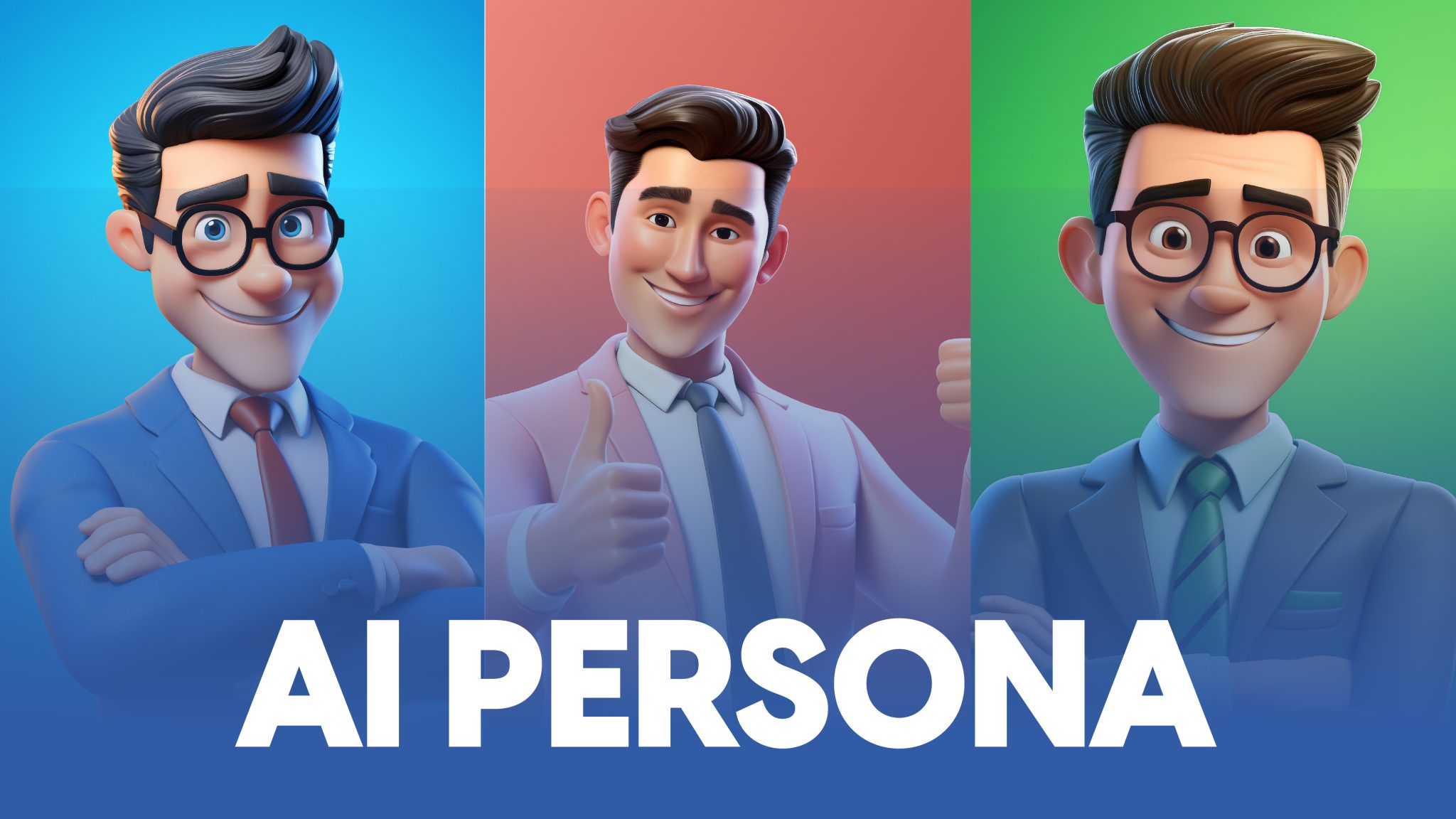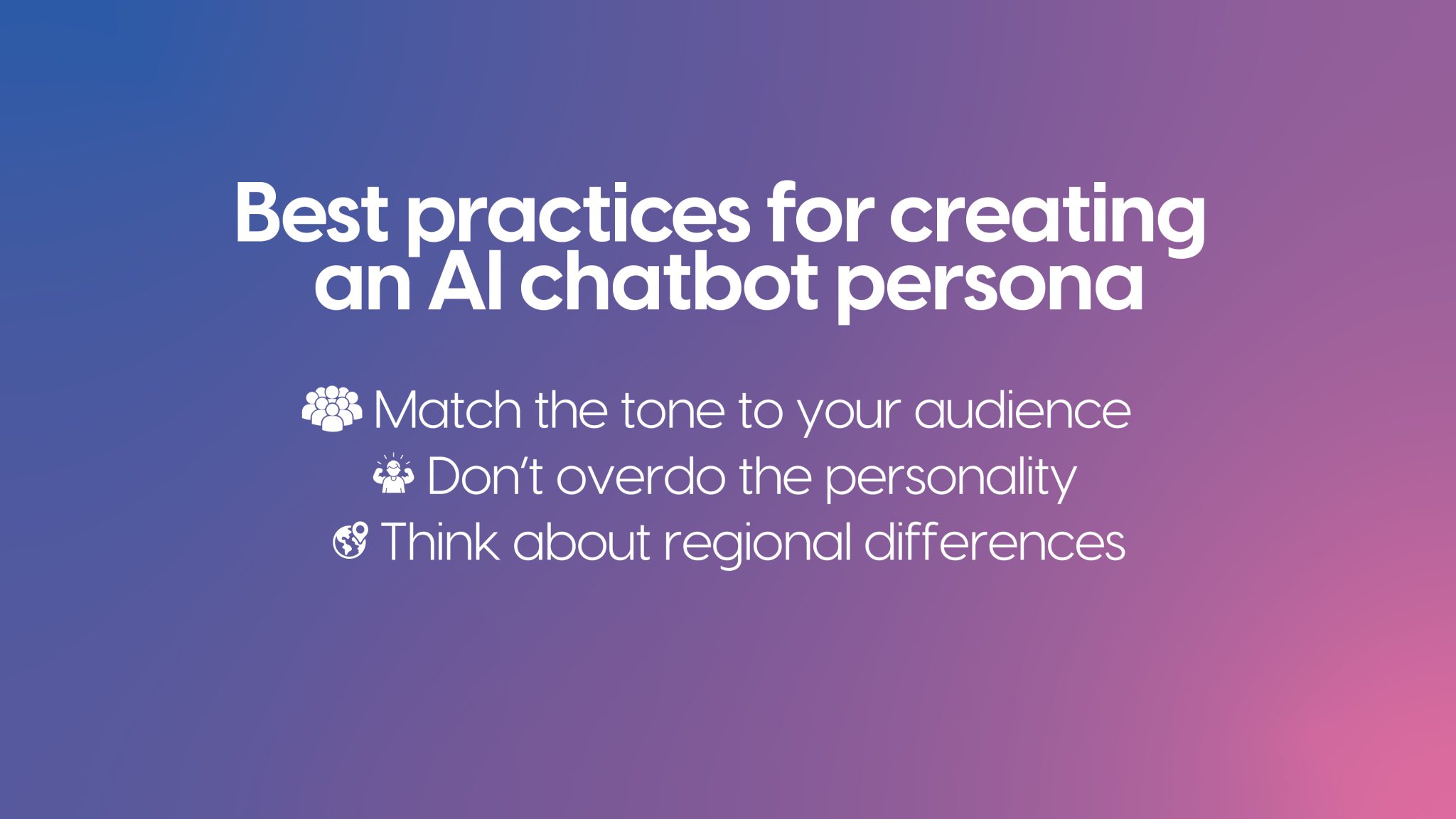
The guide to building an AI persona: Retail edition

What is an AI chatbot persona?
What is an AI chatbot persona?
Your AI chatbot persona might be the first interaction a customer has with your brand, so how it sounds really matters. A strong, well-defined persona turns a basic bot into something a guide, a helper, maybe even a brand ambassador. It makes conversations feel natural, not scripted. And when people feel like they’re talking to something that “gets” them, they’re more likely to stick around.
Fact: 74% of users prefer when an AI chatbot introduces itself at the start of a conversation, this simple act increases trust and sets the right tone.
- Trust that lasts: People respond better to bots that feel real. When your AI chatbot has a consistent voice and introduces itself clearly, it builds instant credibility.
- Brand you can recognize: Whether your tone is playful, professional, or somewhere in between, a clear persona helps create a smooth, on-brand experience across every platform.
- Conversations people remember: No one enjoys boring, robotic replies. An AI chatbot with personality can surprise, delight, and hold attention.
- Better outcomes: When users feel at ease, they communicate more quickly. That means fewer misunderstandings, quicker resolutions, and smoother support.
Fact: A study conducted at University of Twente suggests that a casual tone of voice leads to higher levels of trust and customer satisfaction compared to formal or overly enthusiastic tones.
How to create a perfect AI chatbot persona
Designing the right AI chatbot personality can make a big difference in how users interact with your business. An AI chatbot that feels human, helpful, and in tune with your brand will keep people engaged and improve their experience. Here’s how to do it step by step:
Get to know your users first
Before shaping your AI chatbot’s tone or style, take time to understand who you’re talking to. Think about the people visiting your site or using your products or services:
Fact: 74% of users prefer when an AI chatbot introduces itself at the start of a conversation, this simple act increases trust and sets the right tone.
- Are they after fast answers or step-by-step help?
- Do they prefer straight-to-the-point replies or a more relaxed tone?
- What questions come up most often?
Use what you already know, including past enquiries, chat logs, customer reviews, to spot common needs. This helps you personalise the AI chatbot’s language, tone, and functions so it genuinely supports your users.
For example, a gardening supply store might see lots of questions about delivery times and seasonal planting tips. In that case, the AI chatbot should be helpful, clear, and perhaps a little friendly, like a helpful neighbour who knows their plants.
Reflect your brand’s personality
Your AI chatbot should feel like a natural part of your brand, and to achieve that:
Fact: 74% of users prefer when an AI chatbot introduces itself at the start of a conversation, this simple act increases trust and sets the right tone.
- Decide what tone fits best (e.g. warm, casual, no-nonsense, polite).
- Create a simple guide for how the bot should “speak”, including which phrases to use and avoid.
- Keep language consistent with how your team talks to customers elsewhere, whether on social media, email or in person.
For example, a trendy streetwear brand might go for a casual, upbeat tone with a bit of attitude to match its youthful audience.
On the other hand, a high-end furniture store would likely use a more refined, polished tone to reflect its premium feel and help customers feel confident in their purchase.
Build a personality outline
Give your AI chatbot some character but keep it realistic and on-brand. You don’t need to make it feel human, but you do want it to be relatable and consistent. Think about:
- A brief intro: Give it a name and a purpose (e.g. “Hi, I’m Ava! Here to help you find the perfect gift.”)
- Type of responses: Should it be short and clear, or more detailed and guiding?
- Do’s and don’ts: Decide on things like whether to use emojis, humour, or casual phrases.
Having this personality outline in place helps keep the AI chatbot’s voice steady, no matter the situation.
Check how it sounds in real chats
Once the AI chatbot is set up, test it in action. Don’t just check for errors—listen to how it comes across:
- Does it make sense for your audience?
- Does the tone match your brand?
- Are the answers helpful, or too vague?
Try a few example chats or ask your team to give feedback. Adjust replies as needed until it sounds just right. This step is great for spotting anything that might feel off or unclear before users experience it.
Collect feedback and keep improving
No AI chatbot is perfect from the start, so it’s important to keep learning and tweaking. Watch how people use it, and where it might be falling short:
- Are there questions it struggles to answer?
- Are people leaving the chat early?
- Do customers rate their experience positively?
Use short surveys or simple thumbs-up/down ratings to hear directly from users. Small changes, like adjusting a reply or adding more information, can make a big difference.
ALSO READ: Generative AI in Retail: Use Cases and Statistics

Best practices for creating an AI chatbot persona
A good AI chatbot persona helps build trust and keeps users engaged. Here are some key tips to get it right:
Match the tone to your audience
Make sure your AI chatbot’s personality fits your brand and your users’ expectations. For example, a formal tone might not work well for a retail AI chatbot aimed at younger shoppers who expect a more casual and friendly approach. Research your audience and test the tone to find what works best.
Don’t overdo the personality
Too many quirks or jokes can annoy users and get in the way of the AI chatbot’s main job, i.e., helping people. On the other hand, a bot that sounds too robotic can feel unhelpful. Aim for a balance between friendly and efficient.
Think about regional differences
A style or phrase that works in one country or region might not work in another. If your AI chatbot speaks different languages or serves global users, adjust its tone and wording to suit each region. This helps keep the experience smooth and consistent for everyone.
Create the ideal AI chatbot persona with Converso
Creating an AI chatbot that truly represents your brand and resonates with your customers is important. With Converso, you can design an AI assistant that not only answers questions but also guides customers from discovery to checkout. Converso’s AI-driven conversations anticipate customer needs, offering personalised recommendations through chat or voice, ensuring a seamless journey from browsing to purchase.
Ready to enhance your customer experience? Visit converso.ai to get started and create Conversational AI for retail that truly reflects your brand.
